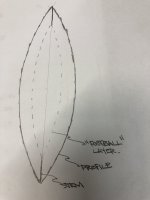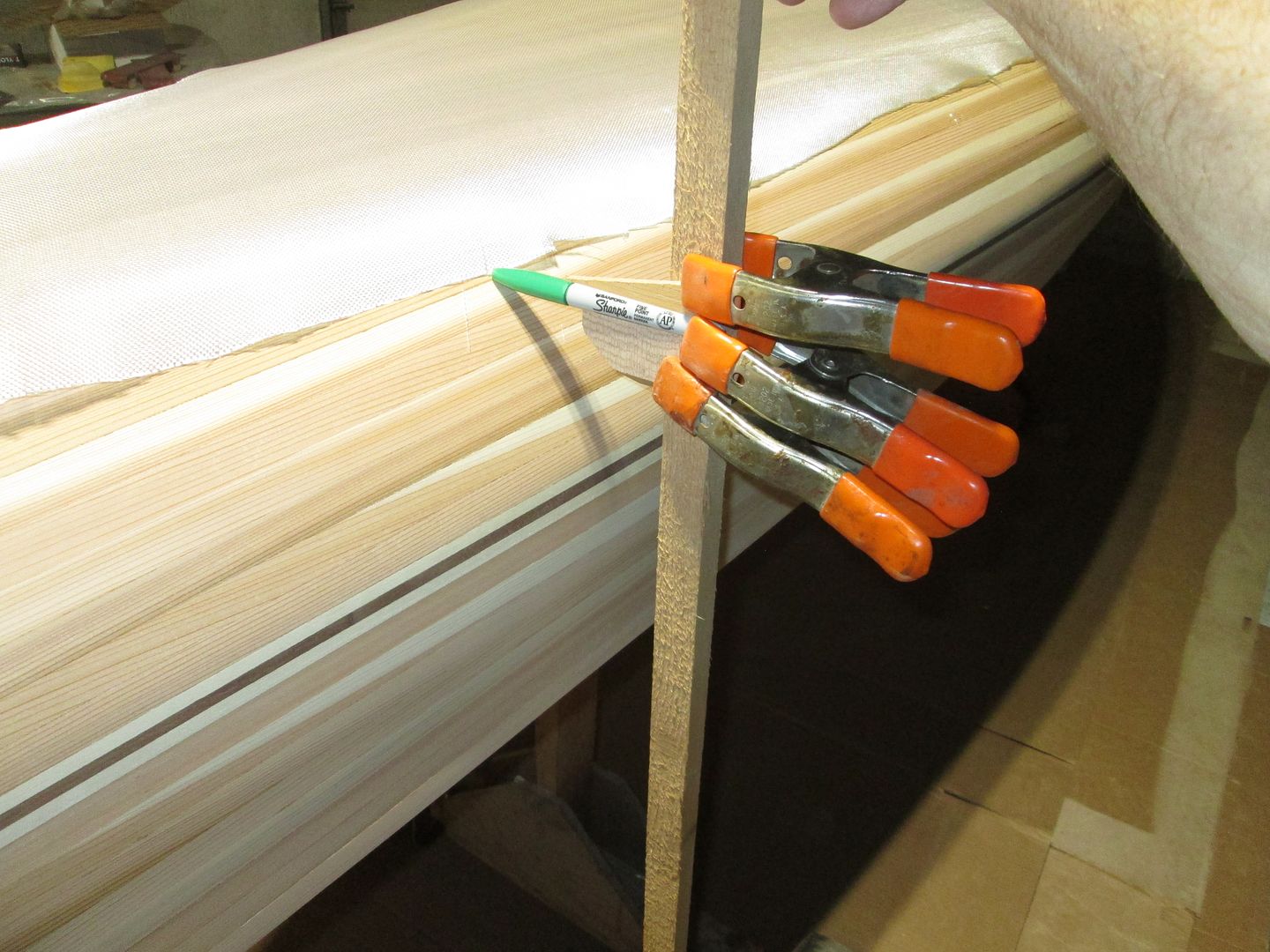I always put my half layer under the full layer, and I carefully lay all the cloth out and sweep away any wrinkles long before I mix the first batch of resin.
I wet out both full and half layers at once, although it does take a bit longer for the inner layer to thoroughly wet through.
You didn’t mention it, but I also prefer to put a seal coat of epoxy on the hull before draping the cloth. Obviously the seal coat needs to be completely tack free before laying any cloth on the hull. I have found that the bare wood can suck in some epoxy and starve the cloth if not sealed before wet out.
Definitely hang around for an hour or two after wet out to squeegee the entire hull and remove any entrained air and eliminate any runs.
I apply my stem strips as soon as I have all the cloth wetted out.
As you build more boats, you’ll refine your technique to find what works best for your skill set and expectations.
We all have differing methods but a common goal…a beautiful functional canoe at a fraction of the cost of any production boat!
Good luck today
The Science of putting the extra layer on Top of the main layer.





